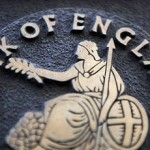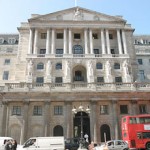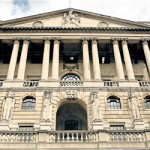Bank of England maintains Bank Rate at 0.5% and the size of the Asset Purchase Programme at £375 billion

The Bank of England’s Monetary Policy Committee (MPC) sets monetary policy in order to meet the 2% inflation target and in a way that helps to sustain growth and employment. At its meeting ending on 5 August 2015, the MPC voted by a majority of 8-1 to maintain Bank Rate at 0.5%. The Committee voted unanimously to maintain the stock of purchased assets financed by the issuance of central bank reserves at £375 billion, and so to reinvest the £16.9 billion of cash flows associated with the redemption of the September 2015 gilt held in the Asset Purchase Facility.
CPI inflation fell back to zero in June. As set out in the Governor’s open letter to the Chancellor, around three quarters of the deviation of inflation from the 2% target, or 1½ percentage points, reflects unusually low contributions from energy, food, and other imported goods prices. The remaining quarter of the deviation of inflation from target, or ½ a percentage point, reflects the past weakness of domestic cost growth, and unit labour costs in particular. The combined weakness in domestic costs and imported goods prices is evident in subdued core inflation, which on most measures is currently around 1%.
With some underutilised resources remaining in the economy and with inflation below the target, the Committee intends to set monetary policy in order to ensure that growth is sufficient to absorb the remaining economic slack so as to return inflation to the target within two years. Conditional upon Bank Rate following the gently rising path implied by market yields, the Committee judges that this is likely to be achieved.
In its latest economic projections, the Committee projects UK-weighted world demand to expand at a moderate pace. Growth in advanced economies is expected to be a touch faster, and growth in emerging economies a little slower, than in the past few years. The support to UK exports from steady global demand growth is expected to be counterbalanced, however, by the effect of the past appreciation of sterling. Risks to global growth are judged to be skewed moderately to the downside reflecting, for example, risks to activity in the euro area and China.
Private domestic demand growth in the United Kingdom is expected to remain robust. Household spending has been supported by the boost to real incomes from lower food and energy prices. Wage growth has picked up as the labour market has tightened and productivity has strengthened. Business and consumer confidence remain high, while credit conditions have continued to improve, with historically low mortgage rates providing support to activity in the housing market. Business investment has made a substantial contribution to growth in recent years. Firms have invested to expand capacity, supported by accommodative financial conditions. Despite weakening slightly, surveys suggest continued robust investment growth ahead. This will support the continuing increase of underlying productivity growth towards past average rates.
Robust private domestic demand is expected to produce sufficient momentum to eliminate the margin of spare capacity over the next year or so, despite the continuing fiscal consolidation and modest global growth. This is judged likely to generate the rise in domestic costs expected to be necessary to return inflation to the target in the medium term.
The near-term outlook for inflation is muted. The falls in energy prices of the past few months will continue to bear down on inflation at least until the middle of next year. Nonetheless, a range of measures suggest that medium-term inflation expectations remain well anchored. There is little evidence in wage settlements or spending patterns of any deflationary mindset among businesses and households.
Sterling has appreciated by 3½% since May and 20% since its trough in March 2013. The drag on import prices from this appreciation will continue to push down on inflation for some time to come, posing a downside risk to its path in the near term. Set against that, the degree of slack in the economy has diminished substantially over the past two and a half years. The unemployment rate has fallen by more than 2 percentage points since the middle of 2013, and the ratio of job vacancies to unemployment has returned from well below to around its pre-crisis average. The margin of spare capacity is currently judged to be around ½% of GDP, with a range of views among MPC members around that central estimate. A further modest tightening of the labour market is expected, supporting a continued firming in the growth of wages and unit labour costs over the next three years, counterbalancing the drag on inflation from sterling.
Were Bank Rate to follow the gently rising path implied by market yields, the Committee judges that demand growth would be sufficient to return inflation to the target within two years. In its projections, inflation then moves slightly above the target in the third year of the forecast period as sustained growth leads to a degree of excess demand.
Underlying those projections are significant judgements in a number of areas, as described in the August Inflation Report. In any one of these areas, developments might easily turn out differently than assumed with implications for the outlook for growth and inflation, and therefore for the appropriate stance of monetary policy. Reflecting that, there is a spread of views among MPC members about the balance of risks to inflation relative to the best collective judgement presented in the August Report. At the Committee’s meeting ending on 5 August, the majority of MPC members judged it appropriate to leave the stance of monetary policy unchanged at present. Ian McCafferty preferred to increase Bank Rate by 25 basis points, given his view that demand growth and wage pressures were likely to be greater, and the margin of spare capacity smaller, than embodied in the Committee’s collective August projections.
All members agree that, given the likely persistence of the headwinds weighing on the economy, when Bank Rate does begin to rise, it is expected to do so more gradually and to a lower level than in recent cycles. This guidance is an expectation, not a promise. The actual path Bank Rate will follow over the next few years will depend on the economic circumstances. The Committee will continue to monitor closely the incoming data.
Source: Bank of England (BoE)



























